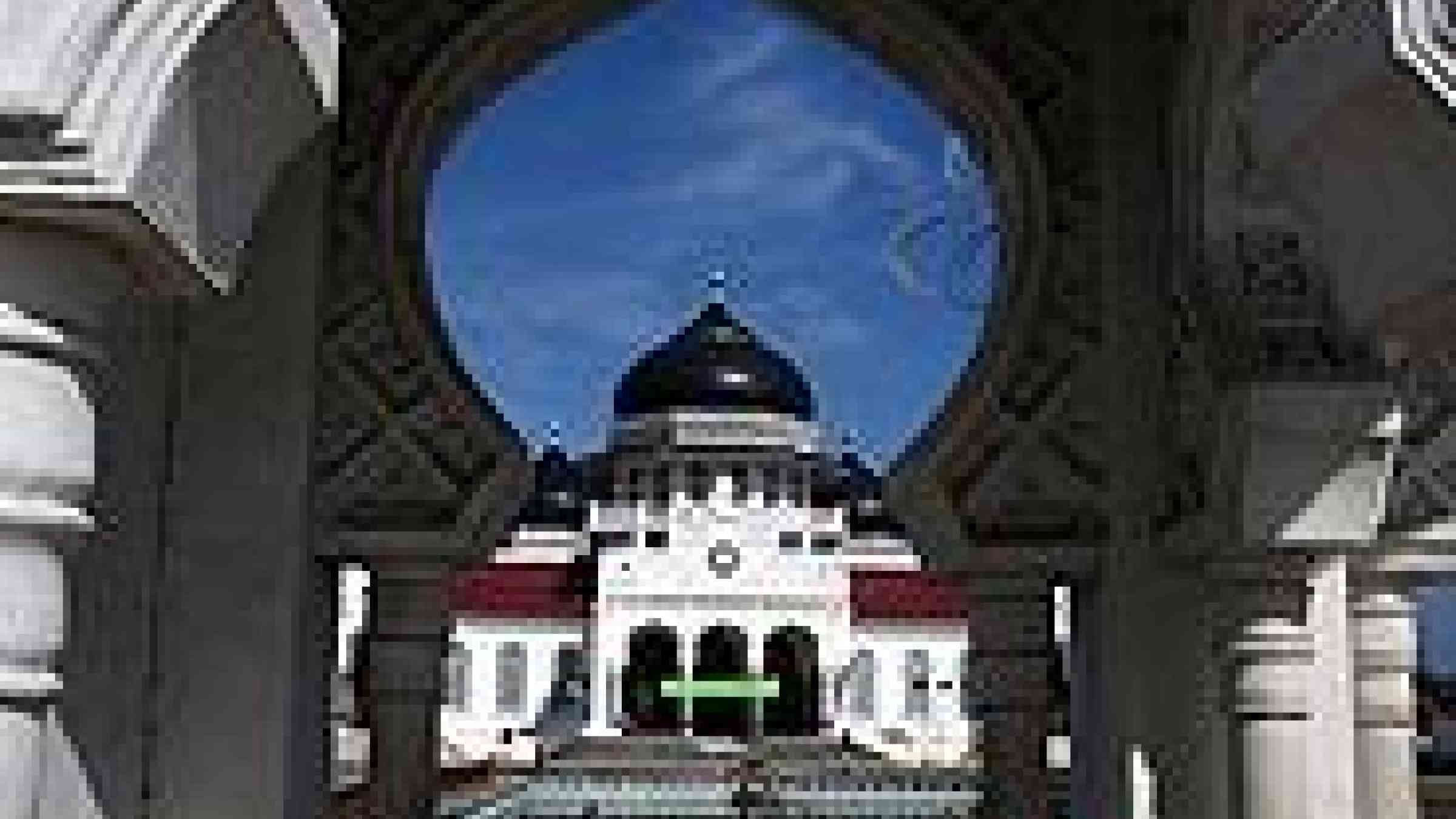Indonesia: 'Major role' for mosques in disaster

Jakarta - In the world's most disaster-prone country with the largest Muslim population, disaster-management experts and religious leaders say mosques can represent more than spiritual refuge.
Ali M. Noor Muhammad, country director for Islamic Relief Indonesia (IRI), told IRIN it was not only the physical structure of the mosque, but also the influence and respect of its religious leaders that should be tapped in the event of a disaster.
"These religious leaders will be trained and inspired to touch the humanitarian side and cooperation between people for support, development and relief of suffering... as their message is so effective and well-received and applied by communities," he said.
A recent report by IRI, the UN Office for the Coordination of Humanitarian Affairs (OCHA) and Nahdlatul Ulama (NU), a traditional Sunni Islam organization in Indonesia, is the first to research the potential role in a disaster for the country's 600,000 mosques.
At the report's launch, Kyai Haji Abdul Djamil, head of research and development at the Ministry of Religious Affairs, likened the country's mosques to a library with a lot of books, but in need of a catalogue with a coordinated strategy.
"I believe this report is important in revitalizing and empowering mosques, especially after losses in some areas," Djamil said. The researchers focused on case studies of six mosques in two provinces of Java recently affected by disaster.
Mosques have been used in many of Indonesia's disasters, large and small, from the 2004 tsunami that left 167,000 dead in the country, to the earthquake in 2009 that left thousands without homes in Padang in West Sumatra.
"The mosque is a key element in disaster-risk reduction and a key element to save lives," Ignacio Leon-Garcia, head of OCHA in Indonesia, said. "This is something of which Muslims should be proud."
Focal point
The mosque is often the only building left standing following destructive high winds and floods. While some attribute this to a miracle of sorts, most say it is thanks to the amount of money and care communities put into building their religious gathering spot, explained the report's researchers, Muhammad Alie Humaedi and Zulfa Sakhiyya.
The report suggests four primary areas of disaster-risk reduction for mosques: storage of supplies, coordination of a relief effort, distribution of supplies and a place for therapy and long-term healing.
Avianto Muhtadi, chairman of climate change and disaster management at NU, said after reading the report he began to weigh the role of disaster response when planning buildings. "We should build mosques keeping these extra needs in mind," he said, adding that the number of bathrooms and open spaces should be considered.
Challenges
As a religious institution, disaster response is a new function for a sanctuary with strict codes of conduct. The internal areas, only used for prayer, are traditionally off-limits to non-Muslims.
In a country with several Islamic groups, including the majority Sunni, it cannot be assumed that the preliminary findings of the report, which looked at NU mosques, hold true for all mosques, experts say.
Though aid groups welcome the report's findings, some are hesitant to directly involve any religious institution in their relief efforts due to accountability concerns as well as issues with endorsement and alignment with another institution's activities. Such sceptics are more likely to channel disaster money and relief efforts through a school.
There is the added question of transparency as construction of mosques in Indonesia is not well-regulated, some aid workers said. If a family has enough money, it can build a structure, declare it a mosque and then begin raising money and community support.
But these sorts of details are why the mosque's role in disaster mitigation needed such a study, Djamil said.
nb/ds/mw